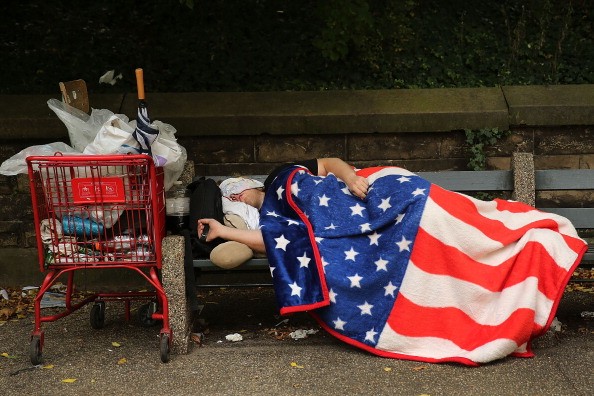A dark cloud hangs over America's streets as homelessness surges to a staggering 12% increase, the highest level since records began in 2007. This grim reality, painted by the latest federal data, reveals a perfect storm of soaring rents and dwindling pandemic aid leaving an alarming number of Americans without a roof over their heads.
Roughly 653,000 individuals now grapple with homelessness, representing a stark rise of 70,650 from the previous year. Worryingly, this surge is fueled by first-time cases, signaling a worrying new trend. Even a promising decline in family homelessness since 2012 has cruelly reversed, underscoring the severity of the crisis.
"For those on the frontlines, this isn't surprising," lamented Ann Oliva, CEO of the National Alliance to End Homelessness. Housing and Urban Development Secretary Marcia Fudge echoed the gravity of the situation, emphasizing the "urgent need" for proven solutions to both help people transition out of homelessness and prevent it from taking root in the first place.
The past decade had seen glimmers of hope. By 2017, focused government efforts, particularly aimed at veterans' housing, brought the number down from 637,000 to 554,000. The pandemic response of emergency rental assistance, stimulus payments, and eviction moratoriums further stabilized the situation for a couple of years.
However, Jeff Olivet, Executive Director of the US Interagency Council on Homelessness, warns that these measures merely "held off the rise in homelessness we are now seeing." He points to the twin demons of skyrocketing housing costs and a critical shortage of affordable homes as the primary culprits, pushing countless Americans precariously close to the brink.
The surge isn't uniform. Within this bleak national picture, specific demographics bear the brunt: individuals experienced a nearly 11% increase in homelessness, veterans 7.4%, and families with children a concerning 15.5%. The racial disparities are stark - despite constituting only 13% of the population, Black Americans account for 37% of those experiencing homelessness. Moreover, age plays a role, with over a quarter of homeless adults exceeding 54 years old.
Looking ahead, HUD is cautiously optimistic. The January count took place before a recent decline in rent increases, which might offer some glimmer of hope for the next count in a few weeks. Additionally, President Biden's proposed budget offers potential, with guaranteed vouchers for veterans and foster care youth aiming to reduce the homeless population.
While California, New York, Florida, and Washington house over half the nation's homeless population, other areas show promise. Chattanooga, Tennessee, saw a remarkable 49% reduction by prioritizing permanent housing and prevention programs. Other success stories include Dallas, Newark, Houston, and San Jose, demonstrating that effective strategies can yield positive results.
The road to tackling America's homelessness crisis is long and arduous. This latest data serves as a stark wake-up call, demanding immediate action and sustained commitment from individuals, communities, and government alike. Only then can the dream of a safe and secure home become a reality for every American.



























